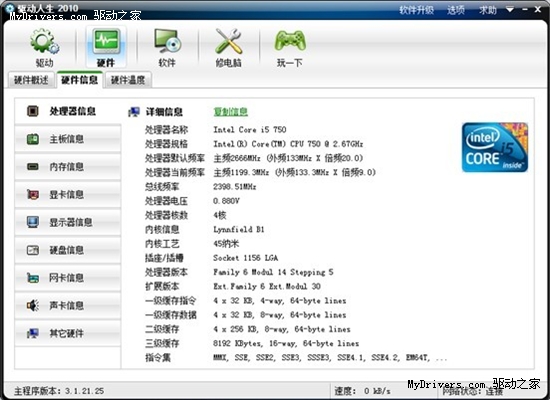本文实例讲述了php实现httpRequest的方法。分享给大家供大家参考。具体如下:
想从学校图书馆的网站上抓取数据处理之后在返回给浏览器,试了不少方法。首先试了http_request(),但是这个学院pecl_http支持,后来又试了网上流传甚广的class HttpRequest,可能是我不会使用,也失败了。后来看到了函数httpRequest($url, $post='', $method='GET', $limit=0, $returnHeader=FALSE, $cookie='', $bysocket=FALSE, $ip='', $timeout=15, $block=TRUE),用它成功了,因此贴出来分享一下。函数代码如下:
复制代码代码如下:
<?php
/**
* Respose A Http Request
*
* @param string $url
* @param array $post
* @param string $method
* @param bool $returnHeader
* @param string $cookie
* @param bool $bysocket
* @param string $ip
* @param integer $timeout
* @param bool $block
* @return string Response
*/
function httpRequest($url,$post='',$method='GET',$limit=0,$returnHeader=FALSE,$cookie='',$bysocket=FALSE,$ip='',$timeout=15,$block=TRUE) {
$return = '';
$matches = parse_url($url);
!isset($matches['host']) && $matches['host'] = '';
!isset($matches['path']) && $matches['path'] = '';
!isset($matches['query']) && $matches['query'] = '';
!isset($matches['port']) && $matches['port'] = '';
$host = $matches['host'];
$path = $matches['path'] ? $matches['path'].($matches['query'] ? '?'.$matches['query'] : '') : '/';
$port = !empty($matches['port']) ? $matches['port'] : 80;
if(strtolower($method) == 'post') {
$post = (is_array($post) and !empty($post)) ? http_build_query($post) : $post;
$out = "POST $path HTTP/1.0/r/n";
$out .= "Accept: */*/r/n";
//$out .= "Referer: $boardurl/r/n";
$out .= "Accept-Language: zh-cn/r/n";
$out .= "Content-Type: application/x-www-form-urlencoded/r/n";
$out .= "User-Agent: $_SERVER[HTTP_USER_AGENT]/r/n";
$out .= "Host: $host/r/n";
$out .= 'Content-Length: '.strlen($post)."/r/n";
$out .= "Connection: Close/r/n";
$out .= "Cache-Control: no-cache/r/n";
$out .= "Cookie: $cookie/r/n/r/n";
$out .= $post;
} else {
$out = "GET $path HTTP/1.0/r/n";
$out .= "Accept: */*/r/n";
//$out .= "Referer: $boardurl/r/n";
$out .= "Accept-Language: zh-cn/r/n";
$out .= "User-Agent: $_SERVER[HTTP_USER_AGENT]/r/n";
$out .= "Host: $host/r/n";
$out .= "Connection: Close/r/n";
$out .= "Cookie: $cookie/r/n/r/n";
}
$fp = fsockopen(($ip ? $ip : $host), $port, $errno, $errstr, $timeout);
if(!$fp) return ''; else {
$header = $content = '';
stream_set_blocking($fp, $block);
stream_set_timeout($fp, $timeout);
fwrite($fp, $out);
$status = stream_get_meta_data($fp);
if(!$status['timed_out']) {//未超时
while (!feof($fp)) {
$header .= $h = fgets($fp);
if($h && ($h == "/r/n" || $h == "/n")) break;
}
$stop = false;
while(!feof($fp) && !$stop) {
$data = fread($fp, ($limit == 0 || $limit > 8192 ? 8192 : $limit));
$content .= $data;
if($limit) {
$limit -= strlen($data);
$stop = $limit <= 0;
}
}
}
fclose($fp);
return $returnHeader ? array($header,$content) : $content;
}
}
?>
/**
* Respose A Http Request
*
* @param string $url
* @param array $post
* @param string $method
* @param bool $returnHeader
* @param string $cookie
* @param bool $bysocket
* @param string $ip
* @param integer $timeout
* @param bool $block
* @return string Response
*/
function httpRequest($url,$post='',$method='GET',$limit=0,$returnHeader=FALSE,$cookie='',$bysocket=FALSE,$ip='',$timeout=15,$block=TRUE) {
$return = '';
$matches = parse_url($url);
!isset($matches['host']) && $matches['host'] = '';
!isset($matches['path']) && $matches['path'] = '';
!isset($matches['query']) && $matches['query'] = '';
!isset($matches['port']) && $matches['port'] = '';
$host = $matches['host'];
$path = $matches['path'] ? $matches['path'].($matches['query'] ? '?'.$matches['query'] : '') : '/';
$port = !empty($matches['port']) ? $matches['port'] : 80;
if(strtolower($method) == 'post') {
$post = (is_array($post) and !empty($post)) ? http_build_query($post) : $post;
$out = "POST $path HTTP/1.0/r/n";
$out .= "Accept: */*/r/n";
//$out .= "Referer: $boardurl/r/n";
$out .= "Accept-Language: zh-cn/r/n";
$out .= "Content-Type: application/x-www-form-urlencoded/r/n";
$out .= "User-Agent: $_SERVER[HTTP_USER_AGENT]/r/n";
$out .= "Host: $host/r/n";
$out .= 'Content-Length: '.strlen($post)."/r/n";
$out .= "Connection: Close/r/n";
$out .= "Cache-Control: no-cache/r/n";
$out .= "Cookie: $cookie/r/n/r/n";
$out .= $post;
} else {
$out = "GET $path HTTP/1.0/r/n";
$out .= "Accept: */*/r/n";
//$out .= "Referer: $boardurl/r/n";
$out .= "Accept-Language: zh-cn/r/n";
$out .= "User-Agent: $_SERVER[HTTP_USER_AGENT]/r/n";
$out .= "Host: $host/r/n";
$out .= "Connection: Close/r/n";
$out .= "Cookie: $cookie/r/n/r/n";
}
$fp = fsockopen(($ip ? $ip : $host), $port, $errno, $errstr, $timeout);
if(!$fp) return ''; else {
$header = $content = '';
stream_set_blocking($fp, $block);
stream_set_timeout($fp, $timeout);
fwrite($fp, $out);
$status = stream_get_meta_data($fp);
if(!$status['timed_out']) {//未超时
while (!feof($fp)) {
$header .= $h = fgets($fp);
if($h && ($h == "/r/n" || $h == "/n")) break;
}
$stop = false;
while(!feof($fp) && !$stop) {
$data = fread($fp, ($limit == 0 || $limit > 8192 ? 8192 : $limit));
$content .= $data;
if($limit) {
$limit -= strlen($data);
$stop = $limit <= 0;
}
}
}
fclose($fp);
return $returnHeader ? array($header,$content) : $content;
}
}
?>
调用也很简单的。简单的例子:
复制代码代码如下:
echo httpRequest('http://www.baidu.com');
希望本文所述对大家的php程序设计有所帮助。

















